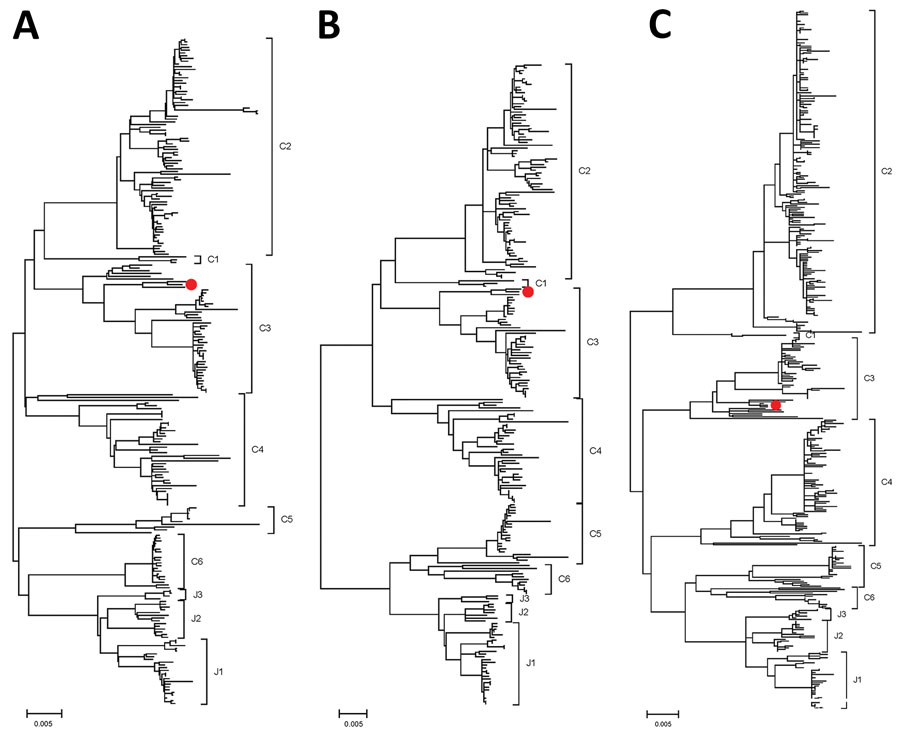Volume 30, Number 6—June 2024
Research Letter
Outbreak of Natural Severe Fever with Thrombocytopenia Syndrome Virus Infection in Farmed Minks, China
Figure 2

Figure 2. Phylogenetic analysis of natural severe fever with thrombocytopenia syndrome virus SD01/China/2022 isolate from outbreak in farmed mink, China. Phylogenetic trees were based on the alignment of large (A), medium (B), and small (C) gene segment sequences from the isolate from this study (red circles). The maximum-likelihood method based on the Tamura-Nei model was used to analyze the molecular evolution by using MEGAX (https://www.megasoftware.net). The confidence of the resulting trees was evaluated by 1,000 bootstrap replications. All other parameters were used as default. Scale bars indicate nucleotide substitutions per site.
1These authors contributed equally to this article.
Page created: May 06, 2024
Page updated: May 22, 2024
Page reviewed: May 22, 2024
The conclusions, findings, and opinions expressed by authors contributing to this journal do not necessarily reflect the official position of the U.S. Department of Health and Human Services, the Public Health Service, the Centers for Disease Control and Prevention, or the authors' affiliated institutions. Use of trade names is for identification only and does not imply endorsement by any of the groups named above.